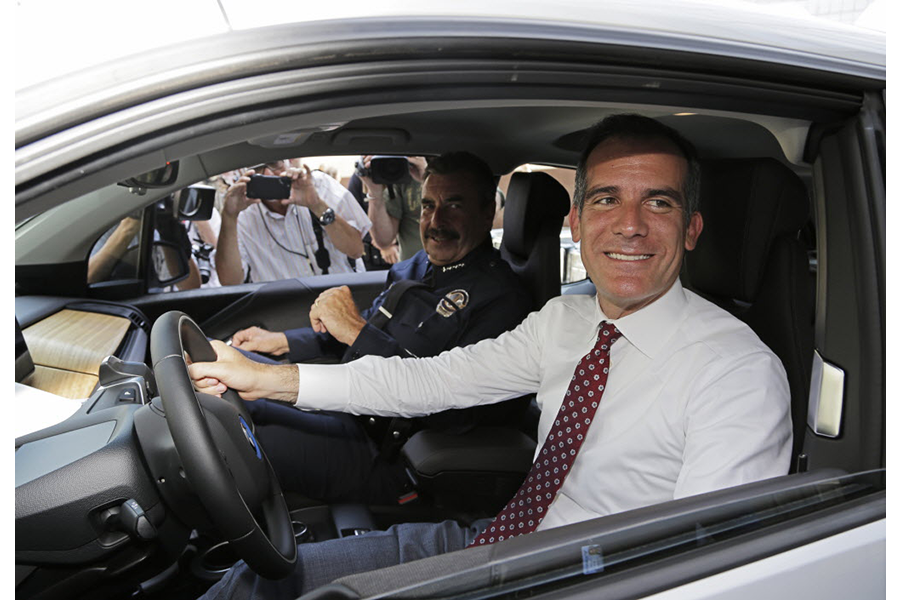Can Los Angeles run on electric cars?
Loading...
In an effort to become “the most sustainable city in America” Los Angeles will lease 160 electric vehicles and 128 plug-in hybrids to replace aging city cars, said Mayor Eric Garcetti on Friday.
Not only will the move contribute to keeping the city’s infamous haze of smog at bay, it will also save taxpayers 41 percent in operating costs of municipal cars, according to a city announcement of the program.
"When we laid out our sustainable city plan ... we promised that 50 percent of new city fleet vehicles purchased each year would be EV by 2017," Mayor Garcetti told the Los Angeles Times. "Now we're fulfilling that promise ahead of schedule."
At a news conference at the Los Angeles Police Department, Garcetti explained that city departments, including police, fire, general services, and water and power will lease the new vehicles. For now, this will comprise half of the city’s fleet, though the long-term plan, according to a city announcement, is that 80 percent of city cars will be electric by 2025.
The commitment is a small victory for electric cars in environmentally progressive California, which is targeting to have 1.5 million zero-emissions vehicles on state roads by 2025.
The state faced a setback recently, as climate legislation – Senate Bill 350 – was forced to drop a controversial provision calling for a 50-percent cut in petroleum use in cars and trucks by 2030, the Christian Science Monitor reported on Friday.
“What are my constituents going to do if we cut petroleum by 50 percent but they are still using cars that require petroleum? Will they all be required to buy new cars?” asked state Sen. Jean Fuller during a floor debate on the bill, Grist's Kate Galbraith reports.
Despite policy roadblocks, cities from Atlanta to Indianapolis to New York City are vying for the honor of running the biggest EV fleet in the country and beefing up charging infrastructure to meet increasing consumer demand for the efficient vehicles.
Consumers are also switching their cars to electric ones. Last year, 118,500 plug-in electric cars were sold in the country, out of a total of 16.5 million cars sold, the highest amount since 2006, says Green Car Reports. About 3 percent of cars on California roads are plug-in electric, compared to 1 percent nationally. The number in California – of battery and plug-in cars – is expected to rise to between 15 and 22 percent by 2024.
Friday's announcement by Mayor Garcetti is part of the city’s efforts to meet ambitious sustainability goals, including a reduction in greenhouse gas emissions by 80 percent by 2050 and water use reduction of 20 percent by 2017.
"I think that today, this announcement, will trickle across the nation as a challenge to other cities, other police departments, other fire departments to look at what you're doing and to take a step that makes a change for the positive," LA’s police chief Charlie Beck told the LA Times.







